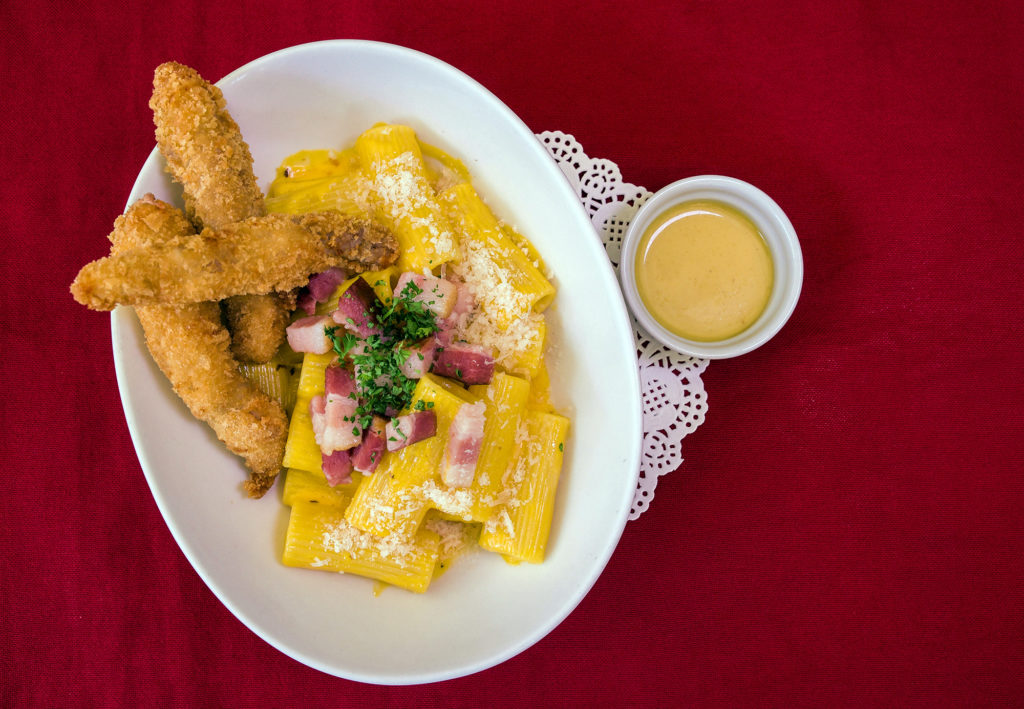Social media was recently divided when restaurants have become more upfront about their stance on diners bringing young children into their establishment. Last year, a restaurant in Binz, Germany banned children after 5 p.m. to provide their adult guests an “oasis of peace.” In Monterey, California, a fine dining seafood restaurant received flak when a sign that read “No strollers, no high chairs, no booster chairs” was posted on social media.
In the Philippines, where the culture values family above all else, this kind of policy will surely encounter resistance—if it sees the light of day at all. While fussy preschoolers in a fine dining restaurant might raise eyebrows from other guests, they are generally tolerated. On the other end of the spectrum, fast food chains have made billionaires of their shareholders by making their brands irresistible to the 12-years-and-under market. The power of persuasion of an adorable toddler obsessed with a grinning bee is largely responsible for fueling Jollibee’s global domination.
Warm welcome

Bizu, the homegrown European bistro and patisserie chain known for its glitzy interiors and luxurious pastries, may not look the part but they understand the need to keep little rascals happy. “We decided to have a kids’ menu as part of the selection since we recognize that customers who come to Bizu also bring their kids,” business development head Christine Palma-Tanco says. “This makes it convenient for our guests to order.”
“For parents, it must be a good feeling. It appears to be attractive to both kids and parents that there is something for them,” says Corner Tree Cafe’s Chiqui Mabanta.
While it may seem that a kids’ menu is there to appeal to children, having this option also shows parents that their children are very much welcome there. Corner Tree Cafe owner Chiqui Mabanta agrees that for parents, it must be a good feeling. “It appears to be attractive to both kids and parents,” she says, “that there is something for them.”
Nice and easy
Mabanta’s vegetarian menu might not be a conventional draw for young palates, but she noticed that having their own selection has made kids more open to trying out their dishes. The restaurateur designed the kids’ menu to make eating out for both parents and children as effortless and painless as possible.
“I wanted to make it easy for kids to eat on their own [so] no fancy dishes. I observed that when moms are visiting friends with their kids, they ask the hostess to prepare pasta with butter and cheese. So I put that on my menu. Also, the names of the dishes are intriguing to kids. Like Chunky Monkeys or Egg and Soldiers. I also made the portions slightly smaller and removed some of the sides.”
When asked what the main characteristics of a child-friendly dish are, Christine Palma-Tanco of Bizu points out three factors: “The kids need to be familiar with the ingredients; the dish induces nostalgia; and the dish needs to be simple enough for a child to eat on their own.”
Tanco also cites “convenience” as their primary reason for offering a child-friendly menu at Bizu. When asked what the main characteristics of a child-friendly dish are, she points out three factors: “The kids need to be familiar with the ingredients; the dish induces nostalgia; and the dish needs to be simple enough for a child to eat on their own.”
Family time
The goal, of course, is to entice whole families to dine in their restaurants, especially in the Filipino culture where weekends are sacred and reserved for time with loved ones. “We make sure that our dishes always have a family-size portion that is good for sharing,” Tanco says. “We recognize that Filipinos love sharing their food.”
For restaurants such as Corner Tree Cafe that has a niche market seeking them out, the families who frequent them have grown to expect good food. “I think the families who bring their kids to vegetarian cafes are probably already good eaters to begin with,” says Mabanta. “Or, some kids had turned vegan after watching videos on animal cruelty. They usually have stronger resolve than adults.”
Truly, a child’s power to persuade their parents where their next meal will be is largely responsible for the course many restaurants have taken. Mabanta confesses, “(The kids’ menu) is not really a big chunk of our sales. But, just providing options makes it easy to get identified as a family-friendly place.”